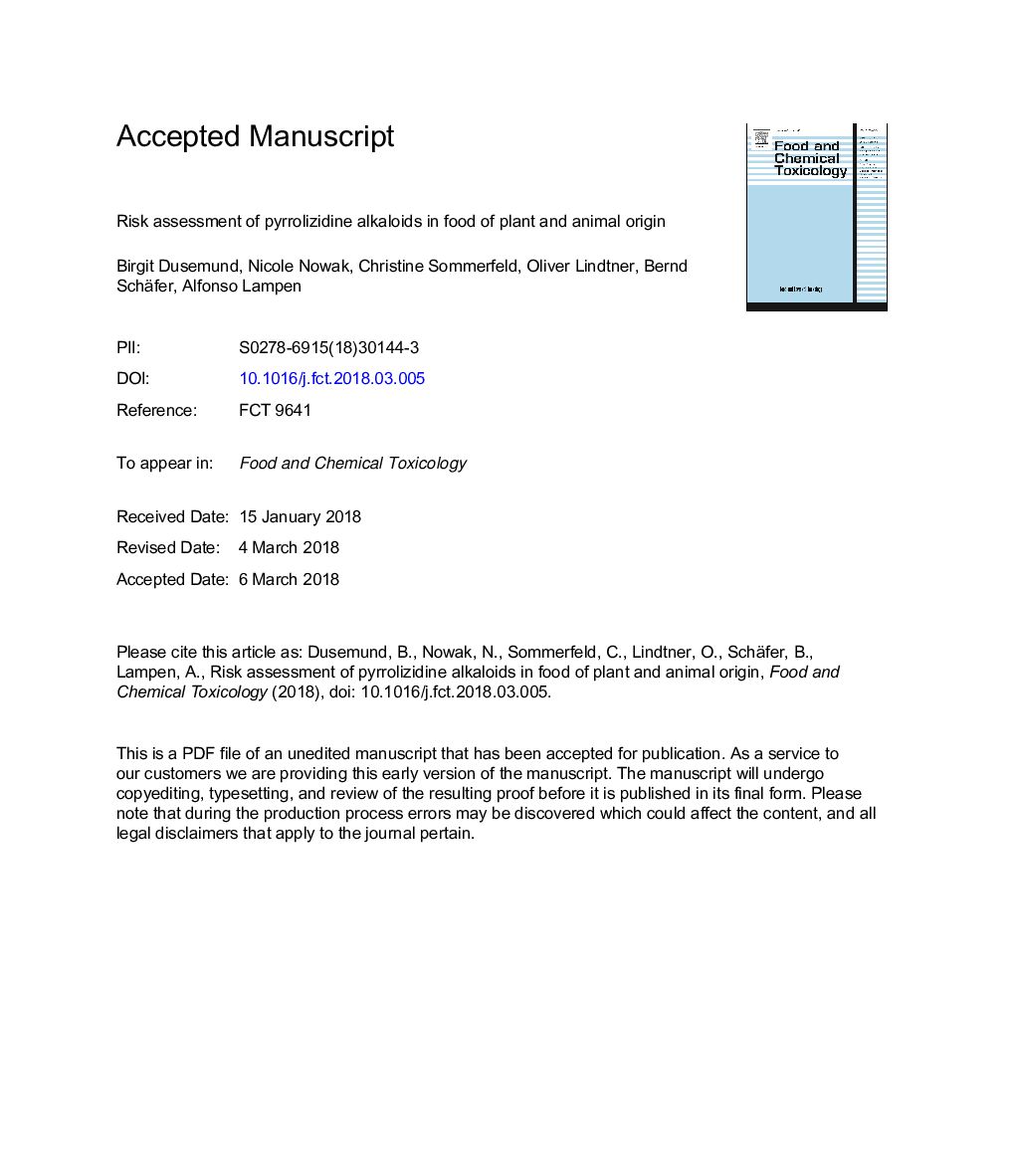| Article ID | Journal | Published Year | Pages | File Type |
|---|---|---|---|---|
| 8547540 | Food and Chemical Toxicology | 2018 | 33 Pages |
Abstract
Acute liver toxicity, specifically in the form of hepatic veno-occlusive disease (HVOD), is known from reports on human poisonings following ingestions of 1,2-unsaturated pyrrolizidine alkaloids (PAs) containing herbs. Recently PA exposure via common foods contaminated via PA-producing plants raised concern, especially regarding the potential of genotoxicity and carcinogenicity. The health risks related to the estimated exposures to PAs from food were assessed. With respect to common foods, herbal teas and teas are the main sources through which consumers can be exposed to PAs. For high long-term consumption of these foods a possible health concern has been revealed in the assessment of chronic risks referring to a BMDL10 of 237â¯Î¼g/kg bw per day recently established by EFSA based on model averaging for data on riddelliine. However, acute health damage from acute or short-term intake of PAs via common food is considered to be unlikely. Food supplements on the basis of PA-producing plants may significantly contribute to PA exposures and their intake is associated with risks of acute and chronic toxicity. However, no health risks have to be expected from the consumption of food supplements based on oil-based preparations of PA-producing plants, which were described to be free of PAs.
Keywords
ARfDBFRHSOSNOAELHVODDHPEFSAJECFABMDGITCOTNTPNOELPTDILOQBMDL10pyrrolizidine alkaloidsIARC یا International Agency for Research on CancerInternational Agency for Research on CancerEuropean Food Safety AuthorityNational Toxicology Programhepatic veno-occlusive diseaseMargin of exposureLOD یا Limit of detectionFoodGastrointestinal tractAcute reference dosebenchmark doseGenotoxic carcinogensHepatic sinusoidal obstruction syndromeUncertainty factorlimit of quantificationlimit of detectionnot specifiedprovisional tolerable daily intakeFood supplementsPASNo observed effect levelNo observed adverse effect levelMOE
Related Topics
Life Sciences
Agricultural and Biological Sciences
Food Science
Authors
Birgit Dusemund, Nicole Nowak, Christine Sommerfeld, Oliver Lindtner, Bernd Schäfer, Alfonso Lampen,
